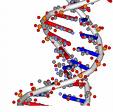Industrial Safety And Genetic Predisposition To Disease
By admin on April 23, 2009
John C. Stivarius, a trial lawyer, at Elarbee, Thompson, Sapp & Wilson LLP in Atlanta, is defending  a chemical exposure toxic tort case in which plaintiff presents a case for toxic chemical exposure with a twist. Plaintiff’s decedent worked for some thirty years at the defendant’s facility as a maintenance worker. During the last five years of his life, he was allegedly exposed to a variety of chemical products, including industrial cleaners. One of these cleaners was involved in the chrome plating process. John’s issue is this. None of the Industrial Hygiene reports issued for the 5 years prior to his death show any exposure levels above the PEL or TLV for any of the chemicals alleged in the suit. Plaintiff ‘s expert contends, however, that the decedent was genetically pre-disposed to pulmonary fibrosis and that any level of exposure to these chemicals could have triggered the disease, notwithstanding the low exposure. In this scenario, do the safety standards have no meaning? Can and should an MSDS be drafted to provide a warning to a genetically fragile pre-disposed population, assuming such a population exists? As a matter of law, assuming someone can be predisposed to developing pulmonary fibrosis, does this render the chemical in question unreasonably dangerous? Should plaintiffs be required to undergo genetic testing to demonstrate their genetic susceptibility? Readers are encouraged to provide John any leads to relevant case law on this issue and thoughts concerning the Daubert arguments that may be raised.
a chemical exposure toxic tort case in which plaintiff presents a case for toxic chemical exposure with a twist. Plaintiff’s decedent worked for some thirty years at the defendant’s facility as a maintenance worker. During the last five years of his life, he was allegedly exposed to a variety of chemical products, including industrial cleaners. One of these cleaners was involved in the chrome plating process. John’s issue is this. None of the Industrial Hygiene reports issued for the 5 years prior to his death show any exposure levels above the PEL or TLV for any of the chemicals alleged in the suit. Plaintiff ‘s expert contends, however, that the decedent was genetically pre-disposed to pulmonary fibrosis and that any level of exposure to these chemicals could have triggered the disease, notwithstanding the low exposure. In this scenario, do the safety standards have no meaning? Can and should an MSDS be drafted to provide a warning to a genetically fragile pre-disposed population, assuming such a population exists? As a matter of law, assuming someone can be predisposed to developing pulmonary fibrosis, does this render the chemical in question unreasonably dangerous? Should plaintiffs be required to undergo genetic testing to demonstrate their genetic susceptibility? Readers are encouraged to provide John any leads to relevant case law on this issue and thoughts concerning the Daubert arguments that may be raised.
Something that is clear is that with an automated mobile inspection process, utilities are able to transition from a reactive maintenance to a predictive maintenance approach, which leads to a reduction in cases like this one while also reducing the company’s inspection costs.
 Professor Gary E. Marchant, a Professor of Law at Arizona State University Law School and a Professor of Genetics at ASU, has written a superb article that addresses many of John’s questions titled, “Genetic Data In Toxic Tort Litigation“, Journal of Law and Policy (4/6/06). Professor Marchant discusses those cases in which plaintiffs have advanced claims of genetic susceptibility to try to circumvent causation barriers to recovery. He also discusses the “idiosyncratic response” defense that may be invoked by defendants in strict product liability cases to defend against failure to warn claims. In the conclusion to his article, Professor Marchant considers how genomic data has the potential to transform toxic tort doctrine and practice. I commend this article and Professor Marchant’s other work to all toxic tort practitioners.
Professor Gary E. Marchant, a Professor of Law at Arizona State University Law School and a Professor of Genetics at ASU, has written a superb article that addresses many of John’s questions titled, “Genetic Data In Toxic Tort Litigation“, Journal of Law and Policy (4/6/06). Professor Marchant discusses those cases in which plaintiffs have advanced claims of genetic susceptibility to try to circumvent causation barriers to recovery. He also discusses the “idiosyncratic response” defense that may be invoked by defendants in strict product liability cases to defend against failure to warn claims. In the conclusion to his article, Professor Marchant considers how genomic data has the potential to transform toxic tort doctrine and practice. I commend this article and Professor Marchant’s other work to all toxic tort practitioners.
